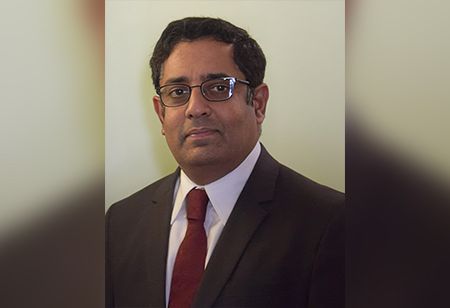Dr. Ravikrishna Chebolu, Country Head & General Manager, India, West Pharmaceutical Services

An accomplished leader in pharmaceuticals and biotech, driving growth in his role with over 20 years of experience spanning various companies including Jubilant, Aragen, Aizant, Laurus, and multinationals like Agilent Technologies. Dr. Ravikrishna Chebolu's expertise encompasses business development, operations, and global market expansion. His excerpts delve into the complex world of pharmaceuticals, highlighting the challenges faced by Indian pharma amidst stringent regulations, while also exploring opportunities through talent development and strategic partnerships.
Globally, governments are striving to strengthen healthcare systems and ensure patient safety across all age groups in response to advancements in technology and science, as well as public health challenges such as COVID-19.
Regulators around the world are demanding increasing levels of quality – a recent example is the changes to the Good Manufacturing Practice (GMP) Annex 1 guidelines in Europe. By incorporating risk-based approaches and strengthening quality management systems, the revised guidelines aim to further minimize the risk of contamination and other issues during the manufacture of sterile products, ultimately enhancing patient safety. Implementation of barrier technology like Restricted Access Barrier Systems (RABS) and isolators are recommended to be considered to minimize human-introduced contamination, with careful integration into existing infrastructure. Alternatives to barrier technology, if not adopted, must be justified. Additionally, validation of container closure integrity (CCI) throughout the product lifecycle is crucial to maintain package integrity and sterility until the end of shelf life.
The impact of EU GMP Annex 1 is expected to be seen beyond Europe as regulatory bodies in the United States, Japan, and China also have similar expectations of pharmaceutical manufacturers to make continuous improvements in their manufacturing practices and quality controls.
As the “Pharmacy of the World”, India is one of the largest producers of generic medicines, accounting for 20% of the global supply by volume. Additionally, the region leads the market in vaccine production, accounting for approximately 60% of global volumes. However, amidst this impressive growth, companies are confronted with mounting challenges to comply with increasingly stringent regulations.
A major challenge recognized by the industry is the constant need to stay updated with the evolving regulations and develop the expertise to understand the critical gaps. Take EU GMP Annex 1 for example, where a deliberate, well-documented contamination control strategy (CCS) is now a focus. Yet, CCS implementation demands a multi-disciplinary methodology, with requirements and controls, which are not always readily apparent.
According to a global survey, the most significant challenge faced by pharma companies regarding CCS is identifying all critical controls, followed by establishing interlinkages between controls and then defining the CCS scope. This underscores the importance of expertise in understanding critical factors that may contribute to contamination within the manufacturing process.
An added challenge is managing the increasing compliance costs. Depending on the drug manufacturer's existing infrastructure, implementing quality risk management measures such as installing new equipment and/or making extensive adjustments to their current infrastructure and finishing operations to comply with updated guidelines do lead to higher spending.
In navigating through these challenges, Indian pharma companies are at a crucial juncture in which the rapidly evolving regulatory landscape demands a proactive approach to ensure compliance while maintaining global competitiveness.
India offers a favorable environment for pharmaceutical production with competitive development costs and a huge talent pool. The key success factor is investing in talent development. Especially for small to mid-size drugmakers, the priority must be sourcing the right talent or upskilling current employees to leverage emerging technologies effectively.
By prioritizing talent development, companies can not only address the skills gap but also enhance operational efficiency and innovation. This proactivity ensures patient safety and regulatory compliance while positioning Indian companies to better serve customers and remain competitive in the ever-evolving industry.
Although the finished drug product manufacturer takes the responsibility to comply with the regulations, pharma manufacturing is not a siloed process. The evolving regulatory landscape requires pharma and biotech companies to partner with true experts who can help them respond to these changes.
As an example, primary packaging components are a consideration in CCS. Pharma companies must be proactive in setting up clear specifications for monitoring and control of particulate and microbial contamination. Navigating through the regulatory requirements would also mean using high-quality packaging components. It is hence important that the component supplier has the right measures in place to support the CCS.
Indian pharma companies that recognize this and showcase readiness and capability to comply with current global regulatory standards will be able to explore new territories of growth. Collaboration with the right partners will not only enhance their international reputation but also establish them as trustworthy manufacturers committed to high-quality standards.
The challenge of addressing the evolving regulatory changes also presents opportunities for the Indian pharma sector to leverage its existing strengths and build a reputation for exceptional reliability and quality. To seize these opportunities, the key lies in actively bridging the knowledge and expertise gap. This can be achieved by proactively cultivating talent within the sector and collaborating with trusted partners, ultimately enabling well-informed decisions that deliver greater value to customers and patients.